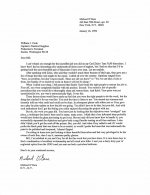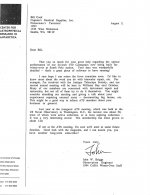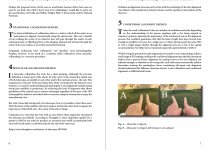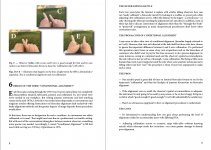Right... so after all that back-pedalling and bluster, we're back to
your earlier assertions then - "
I’m losing the warm fuzzies about today’s technicians even at the major optical firms knowing the in and outs of the operation", "
If people who have a real handle on binocular collimation are “probably long gone,” who’s running the railroad?" and other such gems?
191115
Hi, Patudo:
I think it has been a long time since I’ve seen anyone so bent on a fight ... which I won’t oblige. One of the bad things about most of these forums is that you never know if you speaking to an inexperienced 13-year old, an over-experienced 90-year old, or someone in between with cranial challenges.
At any rate, I will address your concerns—hopefully for the last time. Being a 10th generation American, I would have thought my English good enough that previous comments would have been sufficient.
— Those who have paid attention know WHY the “bluster” and know I have NOT been, as you say “back-pedaling” —
not then; not now; not ever.
— The Big Three are NOT the only “Major Optical Firms.” Why don’t you write a letter to Kevin Busorow, owner of Oberwerk and ask him just how long he had been in the binocular business claiming he “didn’t need a collimator” because he could “eyeball collimation to 100 power.” Ask him about the two video tapes he produced (for sale) in which he claimed “conditional alignment” was a “myth.” Then, ask him what friends, Bill and Cory, tried so long to teach him before it got any traction. Kevin was a friend then; he is a friend, now. I stopped by to see him in Dayton last June, but he was on the road. Finally, ask him how he likes the Mk5 collimator he NOW has which, for so long he claimed he didn’t need, all the while claiming his binoculars were all “perfectly collimated.” Do you think he understood spatial accommodation before Bill came along?
[The point immediately above is one I would have preferred to keep to myself—at least as far as specific names and companies are concerned—But I think the size and importance of the company in question are relevant. That is just ONE of several pieces of information to which I’m privy that would drive my point home like a sledgehammer.]
— Your “probably long gone” comment didn’t originate with me. It came from a U.S. representative of Zeiss. You remember Zeiss, they’re the folks who came up with the Porro prism (capital “P” for Porro) binocular in 1894. If anyone I knew is still there—Senior Chief Opticalman Warren Nuckols retired years ago and has since passed on—you might contact Zeiss in the US and ask them WHY my shop was the first name on the list of their recommended shops for out of warranty Zeiss repair and restoration. I couldn’t find that letter. But I did find one from a customer that came as a result of it. If you want his number, I have it—though I did the work 30 years ago. “Bluster” creates good customers,
AS LONG AS YOU CAN BACK IT UP.
Every word I said was true:
Seize upon the truth, wherever it’s found
On Christian, or on heathen ground
From our friends, from our foes
Neglect the prickle and assume the rose ...
Rev. Isaac Watts, Knickerbocker magazine, N.Y., N.Y. Oct 1836
I’ve been beaten about the head and shoulder by Ed Huff and others (friends all) for flaunting my credentials—oh, how unprofessional. But sometimes, especially on bino forums, it takes megatons just to get some attention. However, if It will make you think and bring this foolishness to an end, I’ll be up for it.
Attached you will find an endorsement from Michael O’Gara who sent his binoculars all the way across the country for restoration and collimation when several of the biggest names on the East Coast danced around the issue.
The next letter came from one of the University of Chicago’s optical engineers working at Yerkes Observatory. The 24-inch Cassegrain telescope of the CARA project went through my computer before it was ready to go to Antarctica in 1993.
Finally, you have been so vociferous lately, quoting things and making assumptions that were never said OR intended, I have offered a bit of information concerning my time in the optics craft as a technician, engineer, optician, and salesperson. Of course, for legal reasons, that list is truncated. In order to substantiate your comments and concerns, I offer you the opportunity to state, as I have, YOUR credentials and experience in the field. I think boldly stating the grounds from which you have repeatedly tried to belittle me with your aggressive claims would be enlightening for all of us. I’m prepared to be impressed. :cat:
“The higher we soar the smaller we appear to those who cannot fly.”— Friedrich Nietzche
Please, no more.









